Field day - John Dawns, Titoki
Dean Satchell, November 2019
John Dawn has a “small” 44 hectare private investment forest near Titoki, west of Whangarei. After coming back to New Zealand from overseas in ‘94 John decided he wanted to grow trees. Log prices were high and in ’96 he bought the property, mostly in pasture at the time, but with some recently planted pine trees and some regenerating bush. The soil is weakly podsolised and LUC 6 & 7 with erosion limitations. This land is better in trees than pasture. John chose the land carefully and considered proximity to port and size, but in retrospect (“you need two lifetimes to grow trees, the first one is for learning”) John feels that he could have chosen a property with better soils.
The soil gets very winter wet, sometimes with a slight pan. John describes the soil as winter slush and summer concrete. This poor drainage presents problems for any land use. Stock cause winter pugging and trees are subject to toppling. However, the land did have a fertiliser history and therefore provided very good growth rates. Because of the combination of good fertility and winter-wet conditions, Johns trees required frequent sail pruning to get them though the first few years without too much toppling.
But the radiata have done well. John planted these at 800 stems per hectare, sail-pruned at year 2, pruned in 3 lifts, then thinned to 400sph. Although subject to occasional windthrow throughout the rotation because of the soil conditions, at just over twenty years old the forest is a very valuable asset. But when to harvest? Peter D-C outlined the Volvo method used by Swedish foresters – you decide to harvest trees when you need a new volvo. With the current low interest rates, rotation length can be extended to well beyond the standard-practice 25 years - essentially the grower needs to keep an eye on log prices and market conditions. Because these trees are pruned, the real value comes from them putting on the beef, so there is no hurry.
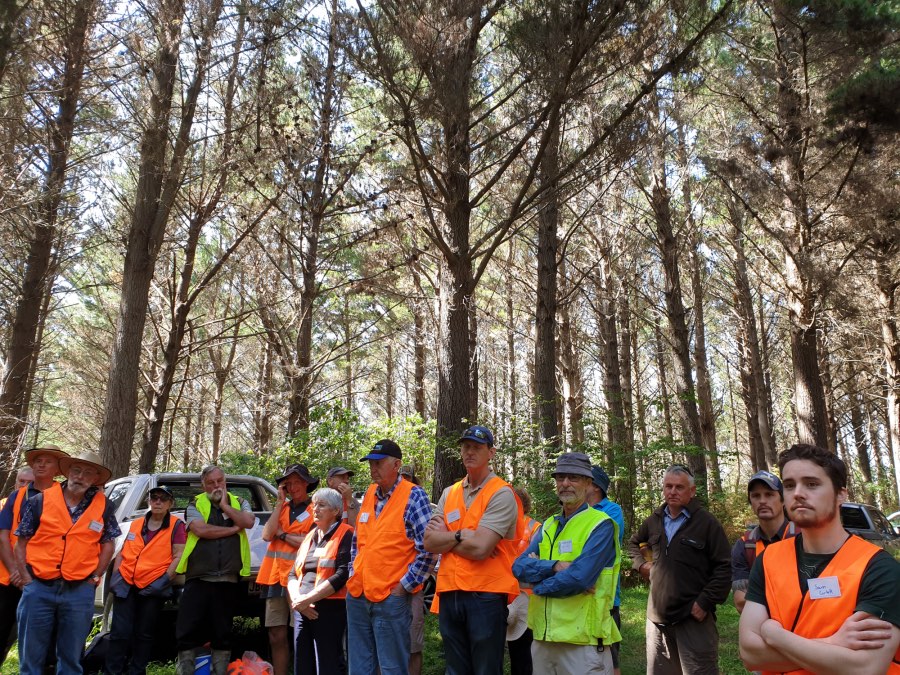
John has no interest in the Emissions Trading Scheme and has not registered his forest. He believes it is completely misconstrued and only subtracts from the capital cost of the land and reduces the price for selling as a standing forest. Essentially, he is retaining the capital value for a later date while keeping his options open for a change of land use.
The group then went down into the radiata stand where Peter D-C led the discussion on forestry and environmental issues. The minister for forests has recently expressed concerns with regards to radiata monocultures, but what we saw was an incredible diversity of plant life under the radiata. Peter described the erosion benefits radiata pine forests offer, along with being carbon sinks and providing species diversity, including as habitat for native birds such as kiwi. Although clearfell harvesting temporarily disrupts this, once replanted the diversity comes back. Peter described how the nutrient all stays on the site, and that removing logs only removes CO2 and water from the site - compare this with muddy pasture and how removing stock from a site removes the nutrients. The conclusion was that plantation forestry is a much more sustainable model and with good financial returns.
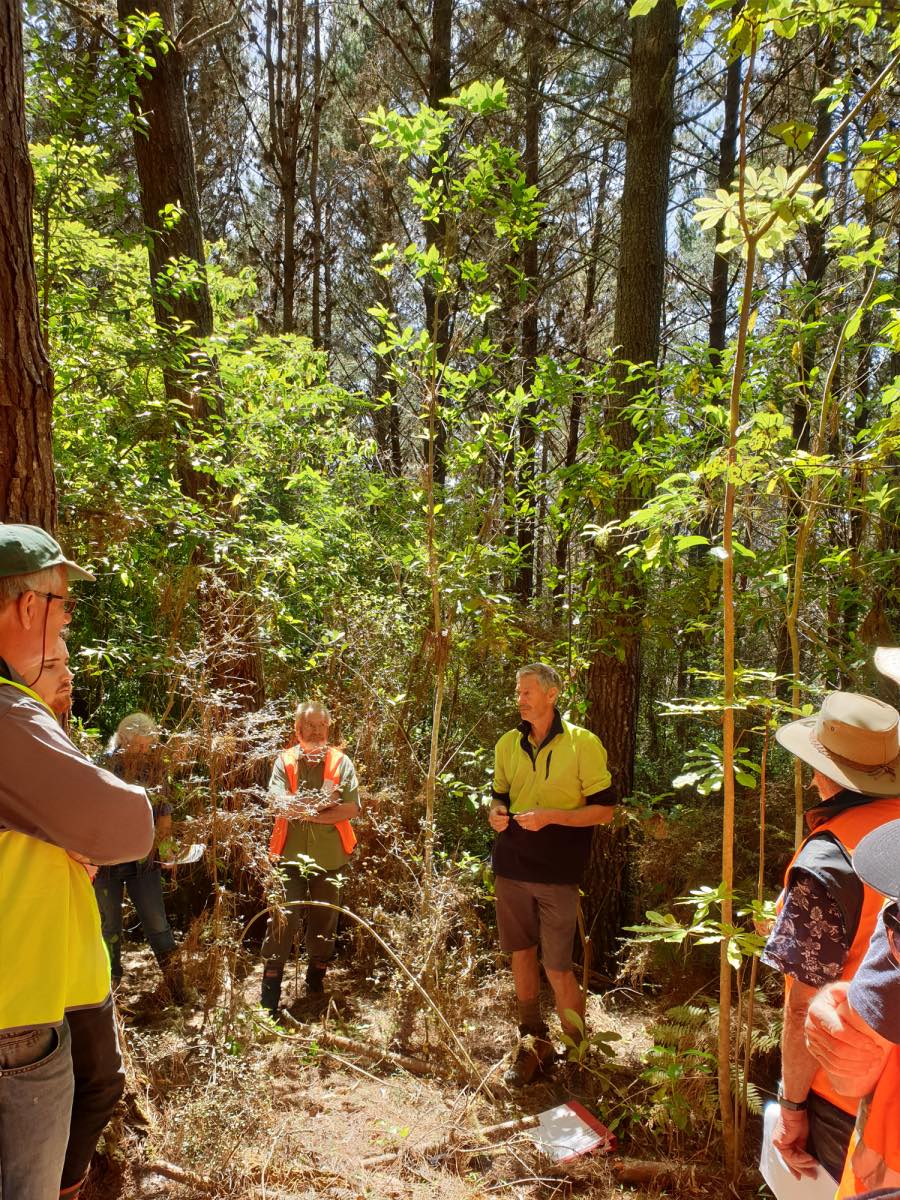
Perhaps this is why plantation forestry was first off the ranks with a National Environment Standard (NES-PF). Forestry activities are permitted subject to national rules. Here in Northland, industry are working very closely with the regional council through the Forestry RMA working group to ensure rules remain reasonable while achieving environmental objectives - for example minimising sedimentation at harvest. In a nutshell harvesting is a permitted activity on green, yellow and orange zoned land, whereas on red zoned land (subject to severe erosion) harvesting is a controlled activity. John just happens to have some red zoned land on his property, which is rare in Northland, so this presented a prime opportunity for discussion on the NES-PF in general but in particular in the context of John harvesting his trees - which could be the first red-zoned forest harvested in Northland. John had the foresight when he bought the property to retain the regenerating bush on his steeper, more erodible slopes and therefore clearfell harvesting doesn’t look like it will pose much of a problem. Noting of course Peter's recent investment in new harvesting technology like winch-assisted feller-bunchers and tethered track machines that virtually eliminate the need for cutting of tracks and generate very little soil disturbance. Knowing John's committment to sustainability and the environment we can all look forward to the next chapter, the harvest. If you are considering harvesting your forest, Zivana Pauling is the Environmental Monitoring Officer in Northland Regional Council. She knows the ins and outs of the NES-PF and is there to help.
There was some discussion on alternatives to clearfelling and in particular Target Diameter Harvesting (TDH). However, because of the soil type and species, these trees are particularly vulnerable to windthrow, and harvesting some trees in the stand leaves the rest more vulnerable to windthrow. Peter suggested that TDH won’t work on this site and noted that because the risk of landslide and gullying is so low on the areas where trees have been planted, that clearfell is the best option overall. It was also suggested that redwoods might be a more appropriate crop for the more erodible parts of the site, because redwoods are much less prone to toppling and better suited to continuous cover forestry.
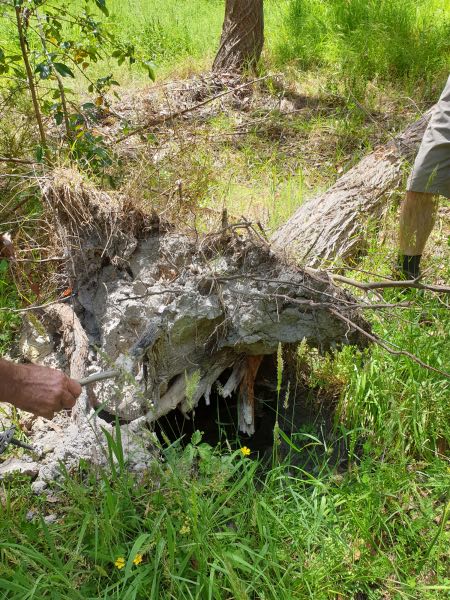
John Ballinger from Northland Regional Council then described the new programme being implemented by NRC called SHaRP. This is an afforestation project targeting erosion-prone land. NRC are currently developing planting and fencing criteria for grants that encourage the right tree being planted in the right place and for the right reason.
The group then had lunch before moving on to the other forest species John had planted.
John likes Eucalyptus but “Eucalyptus likes better soils”. This knowledge comes with the benefit of hindsight, but the monocalypt species he planted (E. globoidea white stringybark and E. pilularis blackbutt) do require free-draining soils and other species would be better suited for this poor-draining site – E. microcorys tallowwood, E. saligna Sydney blue gum and E. botryoides Southern mahogany. The eucalypts had not grown as well as expected and John was concerned that the crowns were a bit thin and wondered if there was a nutrient deficiency that could be addressed with fertiliser. Certainly a nutrient deficiency is not evident when observing the lush grass growth between the trees and the vigour of other tree species. I suggested that the soil is simply too wet for these particular eucalypt species and root health might not be optimal. Although the eucalypts have not done as well as the pines on this site, a good crop can still be expected in another ten or so years and the value of the timber might make up for the lower productivity.
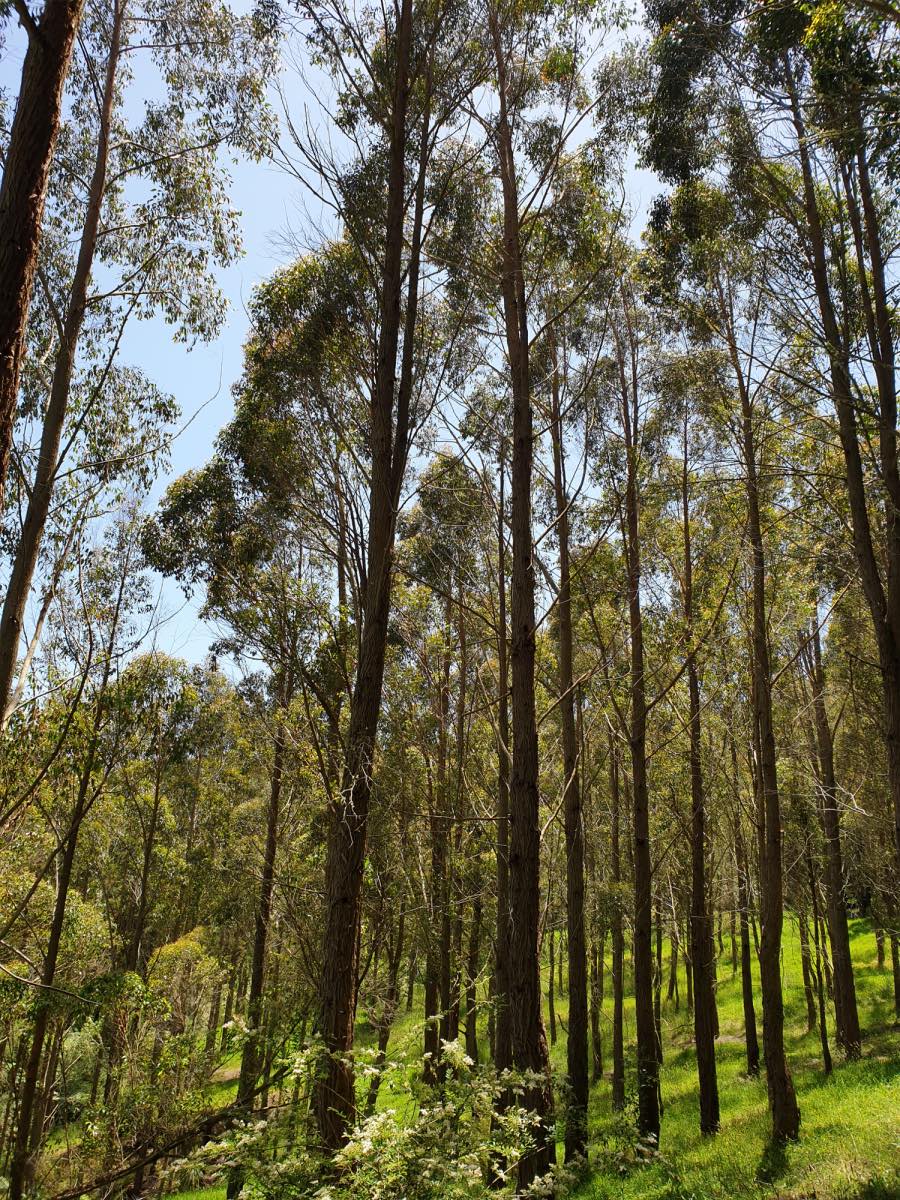
John also planted a small stand of lusitanica cypress on a steeper face in 1997. These have done well, although John commented on the high levels of toppling in the first couple of years as a result of wet soils and good fertility. At twenty years of age the trees are looking really good and are pruned. The diameters are not far behind the radiata of the same age but pruned cypress does need to be grown to large diameters to produce high returns. This is because much of the value is in the clear heartwood, so a 30-35 year rotation is normal for the species. There was some discussion on log values for cypress and comparing annualised volume production with radiata. Although the local market requires development, export prices have recently spiked for cypress. John has no plans for harvesting these trees in the short term, they certainly are very attractive and because of the size of the stand might be well suited for individual tree extraction.
Dean Satchell 26/11/19
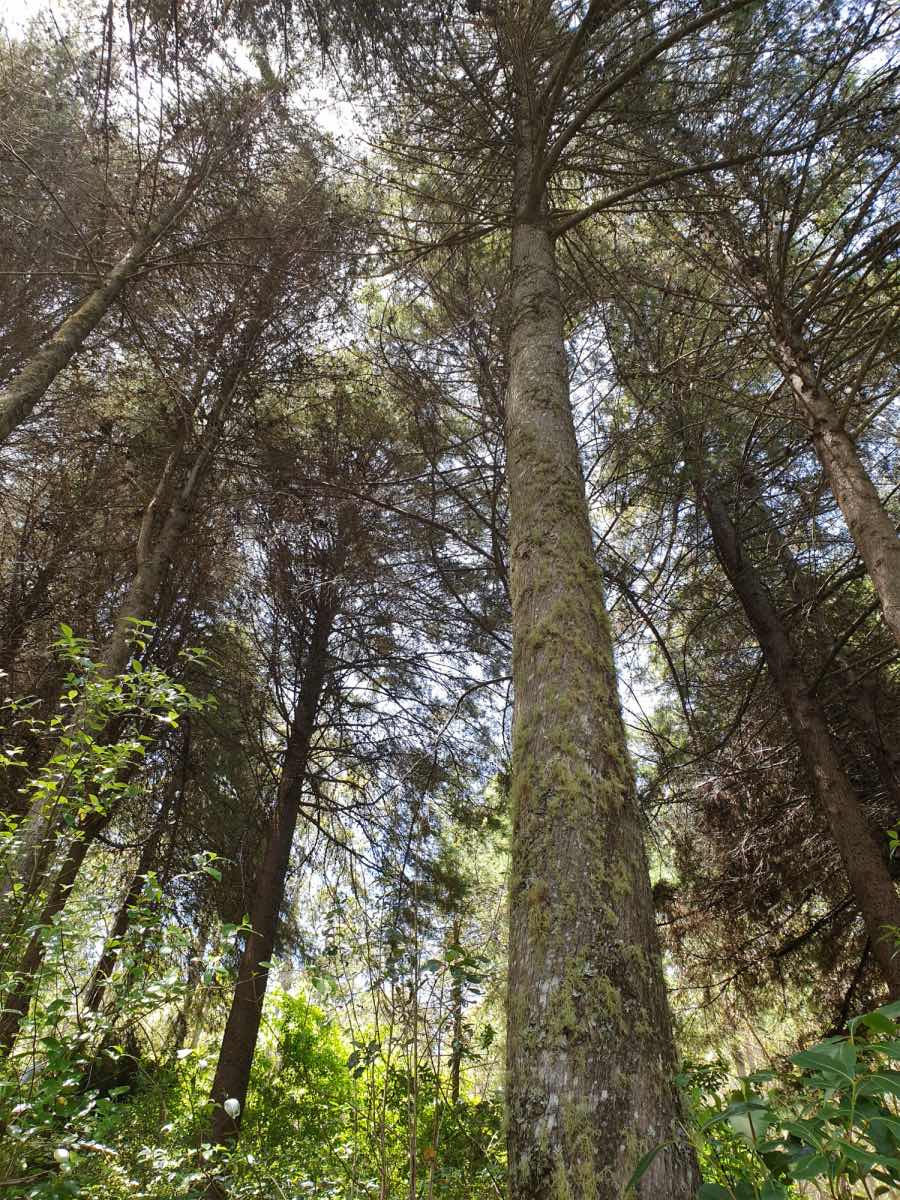

 Farm Forestry New Zealand
Farm Forestry New Zealand